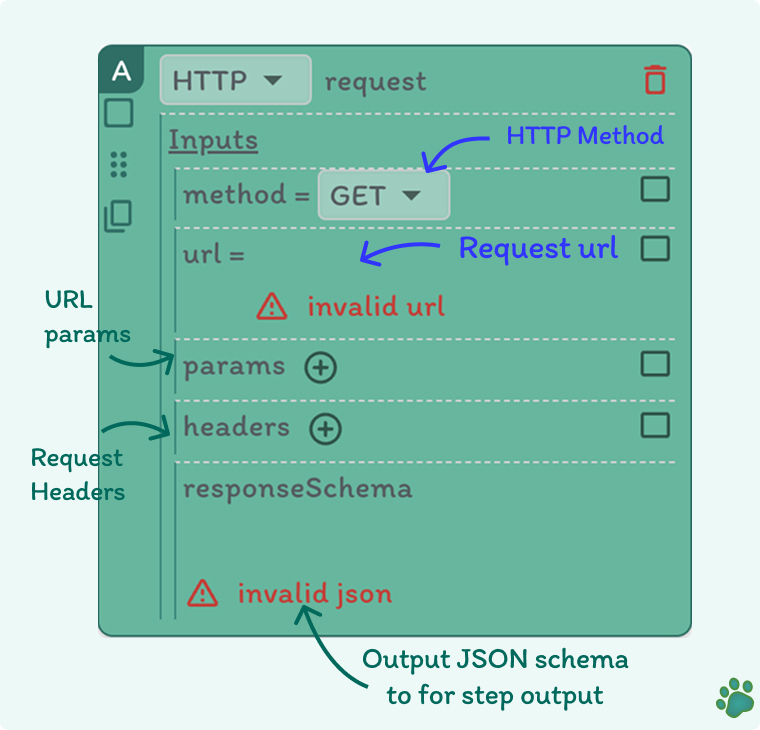HTTP
The HTTP step in Snappit allows you to send HTTP requests from your workflow, enabling powerful integrations with external APIs, web services, and other systems.
This step plays a key role in connecting your workflow automation to the outside world, fetching data, pushing updates, or triggering external actions.

🌐 Purpose
To perform HTTP requests (GET, POST, PUT, DELETE, PATCH) from within your Snappit workflow. The response can be used as input for subsequent steps.
You can give browser capability for your existing system using HTTP steps, unlocking wide variety of use cases
⚙️ Configuration Options
The HTTP step supports the following input fields:
-
Method: HTTP method to use
- Options:
GET,POST,PUT,DELETE,PATCH - Selected via dropdown
- Options:
-
URL: The full endpoint URL where the request should be sent
-
Params: Optional query parameters as key-value pairs
-
Headers: Optional headers to include in the request, such as authentication or content-type headers
-
Response Schema: JSON schema that defines the structure of the expected response body. This schema allows Snappit to parse and validate the response, making its data available for subsequent workflow steps.
🔄 Behavior
- Sends the HTTP request using the defined method, URL, headers, and params
- Parses the response using the provided response schema
- Outputs structured data based on the response schema for downstream use
✅ Use Cases
- Integrating with third-party APIs
- Sending data to your internal backend
- Fetching external data to enrich a workflow
- Performing CRUD operations on remote services
🧪 Example
Suppose you want to get a list of products from an external API:
-
Method: GET
-
URL:
https://api.example.com/products -
Headers:
{ "Authorization": "Bearer ${AuthToken.value}" } -
Response Schema:
{
"type": "object",
"properties": {
"products": {
"type": "array",
"items": {
"type": "object",
"properties": {
"name": { "type": "string" },
"price": { "type": "number" }
}
}
}
}
}
The parsed response can now be used as structured data in your next steps.
The HTTP step extends the power of Snappit workflows by bridging them with external systems through robust, schema-driven API communication.